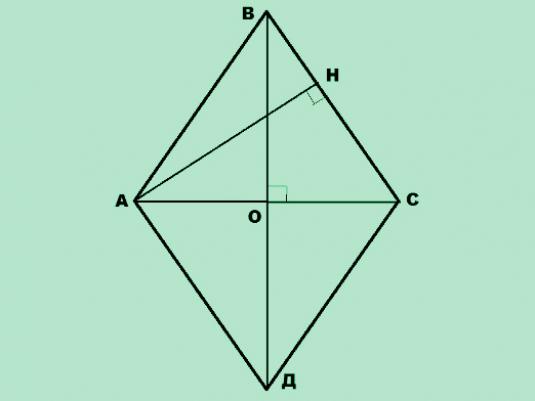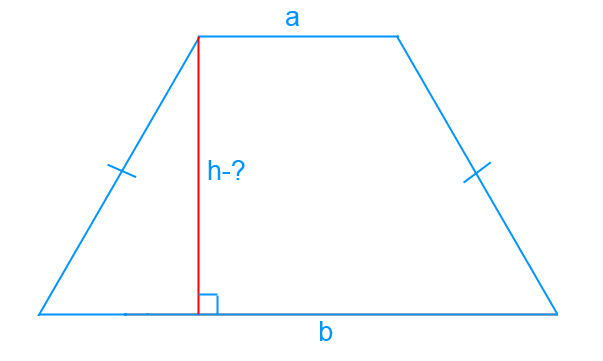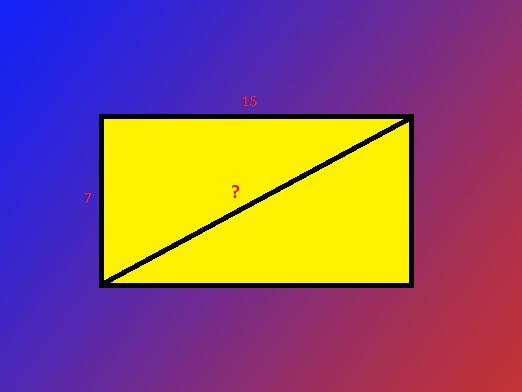How to find the diagonal of a trapezoid?

Before you figure out how to find a diagonaltrapezium, remember what a trapezoid. In planimetry, a trapezoid is a quadrilateral with two opposite sides parallel to each other. These parallel sides are called the bases of the trapezoid, and the others are called the lateral sides. The sides can be the same, then we are dealing with an isosceles trapezoid.
In what follows, let us examine in detail the order of finding the lengthdiagonals for the general case of a non-isosceles trapezium. We will proceed from the fact that the initial data are the lengths of all four sides of the trapezoid, the angles at the base are unknown.
Calculation of the trapezium diagonal

In the trapezoid ABCD shown in the figure, there are two diagonals AC and BD. The order of finding their length is the same, so consider everything on the example of finding the diagonal BD, opposite ˂BAD.
The diagonal BD is simultaneously the side of the triangle ABD and can be calculated by the cosine theorem using the formula:
BD = √ (AB2+ AD2-2AB.AD.cos ˂ BAD)
In this formula, we know all the quantities exceptcosine ˂ BAD. To calculate it, we will need to perform a small image conversion. "Cut out" the rectangle BNMC from the original trapezoid. As a result, we get a triangle ABD ", in which the side BD" is equal to the side of the trapezoid CD.

˂BAD "in the triangle is ˂BAD in the trapezoid, soAs we did not carry out any transformations with the triangle ABN. So, in this triangle ABD "the side AB is known to us, the side BD" = CD, and the side AD "= AD - NM = AD - BC.
It turns out that by the cosine theorem cos ˂BAD = cos ˂BAD "= (AB2 + AD "2 - BD "2) / 2AB.AD "= (AB2 + (AD-BC)2 - CD2) / 2AB.(AD-BC)
Substituting this expression into the formula found earlier, we get:
BD = √ (AB2+ AD2-2AB.AD.cos ˂BAD) = √ (AB2+ AD2-2AB.AD.(AB2 + (AD-BC)2 - CD2) / 2AB.(AD - BC)) = √ (AB2 + AD2 - AD.(AB2 + (AD-BC)2 - CD2) / (AD - BC)) = √ (AB2 + AD2 - AD.(AD-BC)2/ (AD - BC) - AD.(AB2 - CD2) / (AD - BC)) = √ (AB2 + AD2 - AD2 + AD.BC-AD.(AB2 - CD2) / (AD - BC)) = √ (AB2 + AD.BC-AD.(AB2 - CD2) / (AD-BC))
BD = √ (AB2 + AD.BC-AD.(AB2 - CD2) / (AD-BC))
The formula obtained for the diagonal of the trapezoid is valid for any values of the lengths of the sides of the original quadrangle.
For the second diagonal, the formula will accordingly take the form:
AC = √ (CD2 + AD.BC-AD.(CD2 - AB2) / (AD-BC))
Diagonal of an isosceles trapezoid
If you are interested in how to find the diagonal of an isosceles trapezoid, the resulting formula can be greatly simplified. After all, in an isosceles trapezium AB = CD, hence AB2 - CD2 = 0 and the formula for the length of the diagonal is reduced to the form:
BD = √ (AB2 + AD.BC)
The diagonals of an isosceles trapezoid are equal to each other, so the second diagonal is found by the same formula.
In the event that the initial data arethe length of the trapezium bases, one of the sides and the angles at the base, then the problem of finding the diagonal of the trapezoid reduces to calculating the side of the triangle by the cosine theorem.









